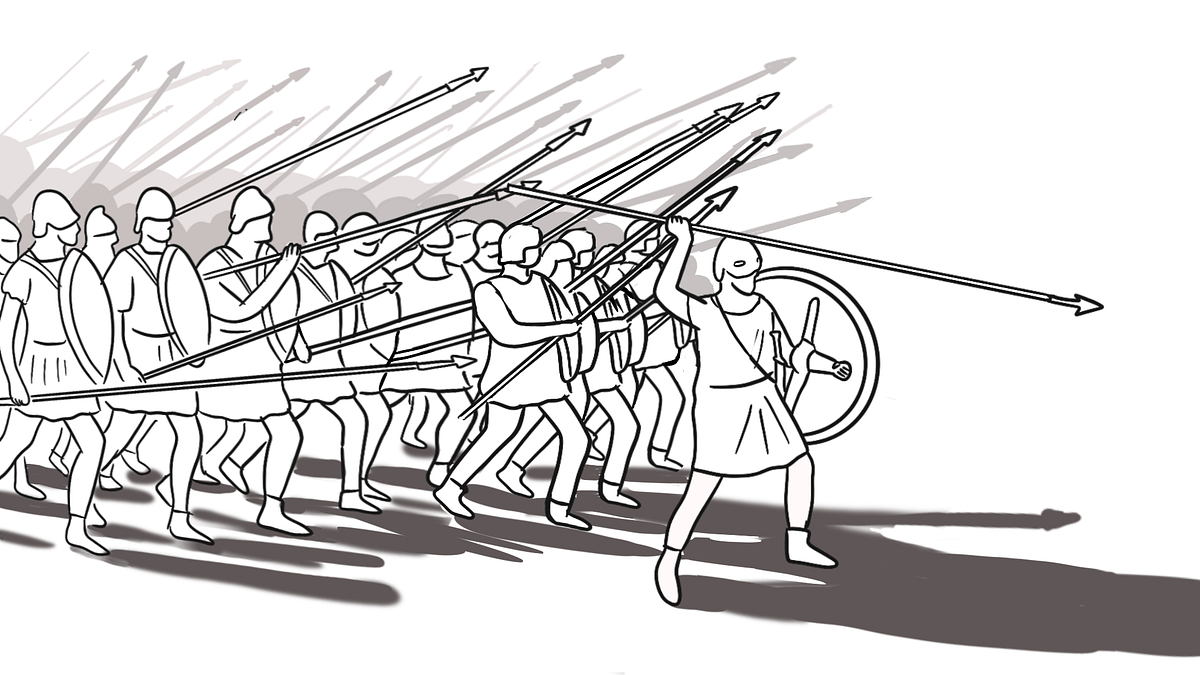Enemies

🌈 Abstract
The article discusses the human instinct for conflict and how it has shaped the evolution and behavior of humans. It explores how the need for conflict and the identification of enemies is a fundamental part of human nature, and how this has manifested in various historical and contemporary contexts. The article also examines the role of tribalism, scapegoating, and the exploitation of this instinct by demagogues and others, and the potential dangers it poses.
🙋 Q&A
[01] The Importance of Conflict and Sex for Species Survival
1. What are the two key things that a species must find reward in to endure, according to the article?
- The two key things are sex and conflict. The article states that "For any species to endure, it must find reward in two things: sex and conflict."
2. Why is conflict inevitable for the survival of a species, according to the article?
- The article explains that "Evolution is a competition for resources, and conflict is inevitable. The ecosystem isn't much concerned with who plays fair: Everything is prey to something else; conflicts arise over resources, mates, territory, and pride. We either develop a reward system that deftly chooses battles, or we'll be consumed by a species that does."
3. How did humans develop the "superpower" of cooperation to survive, according to the article?
- The article states that "First we had to develop our superpower: cooperation. The cocktail that's made us the apex of apex predators is cooperation on the rocks of conflict. Under threat, we become a 'band of brothers,' establishing 'sisterhood' to 'fight the power' and form 'one nation, indivisible.'"
[02] The Dangers of Tribalism and Scapegoating
1. What is the article's perspective on the concept of "tribalism"?
- The article argues that the term "tribalism" misses the point, as "Tribes are defined by their enemies. They help us convert danger and anxiety into brotherhood and glory."
2. How does the article describe the tendency to seek out or manufacture enemies?
- The article states that "Because we enjoy unity in the face of threat, we seek out enemies, even if we need to manufacture them. Or we let others manufacture them for us. Scapegoating is the go-to in the demagogue's handbook."
3. What example does the article provide of a leader exploiting the fear of a common enemy?
- The article cites the example of Donald Trump "telling Time magazine that he would consider deploying the military against immigrants inside the U.S., characterizing undocumented entry as 'an invasion.'"
[03] The Dangers of Antisemitism on College Campuses
1. What issue has arisen on U.S. college campuses in relation to the conflict in Gaza?
- The article states that "The conflict in Gaza has reverberated throughout U.S. higher education, catching many flat-footed despite predictions that there would be disruption in academia and that DEI would begin eating its tail and turn racist. U.S. universities have an important legacy of protest. However, there's been a troubling presence of antisemitism in these campus protests."
2. How does the article characterize the danger of antisemitism in this context?
- The article argues that "while all forms of bigotry are condemnable, antisemitism carries a unique danger due to the long history of setting up Jews as the go-to, manufactured enemy. It's essential for any group advocating for a cause to actively combat any hateful messages that exploit our primal instincts to identify fake enemies."
3. What does the article suggest universities should do in response to disruptive student protests?
- The article states that "when their expression, however, impairs another student's right to a safe college experience, they should be suspended or expelled." It also argues that faculty and administrators who disrupt the university's mission to educate should be fired.
[04] The Dangers of Tribalism and Lack of Grace
1. How does the article describe the tendency for people to turn on those closest to them?
- The article states that "Hate and envy are similar to Wi-Fi: hyperlocal. People who care about us often bear the brunt of our moods and disappointments, which have nothing to do with them. Students on campus who feel animosity for their country, not to mention their fellow students, are hurting others and themselves."
2. What construct does the article reference for identifying "stupid" behavior?
- The article references the construct developed by UC Berkeley Professor Carlo Cippolla, which identifies "stupid" as "people who hurt others while hurting themselves."
3. What question does the article pose to readers to reflect on their own behavior?
- The article asks readers: "At home, in school, on the job, or in your community, do you register the commitment, goodwill, and love of the people closest to you? Or are you being stupid?"